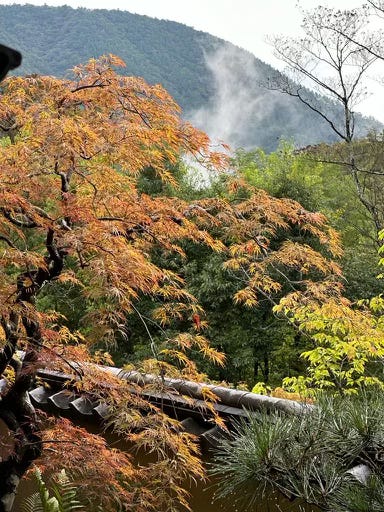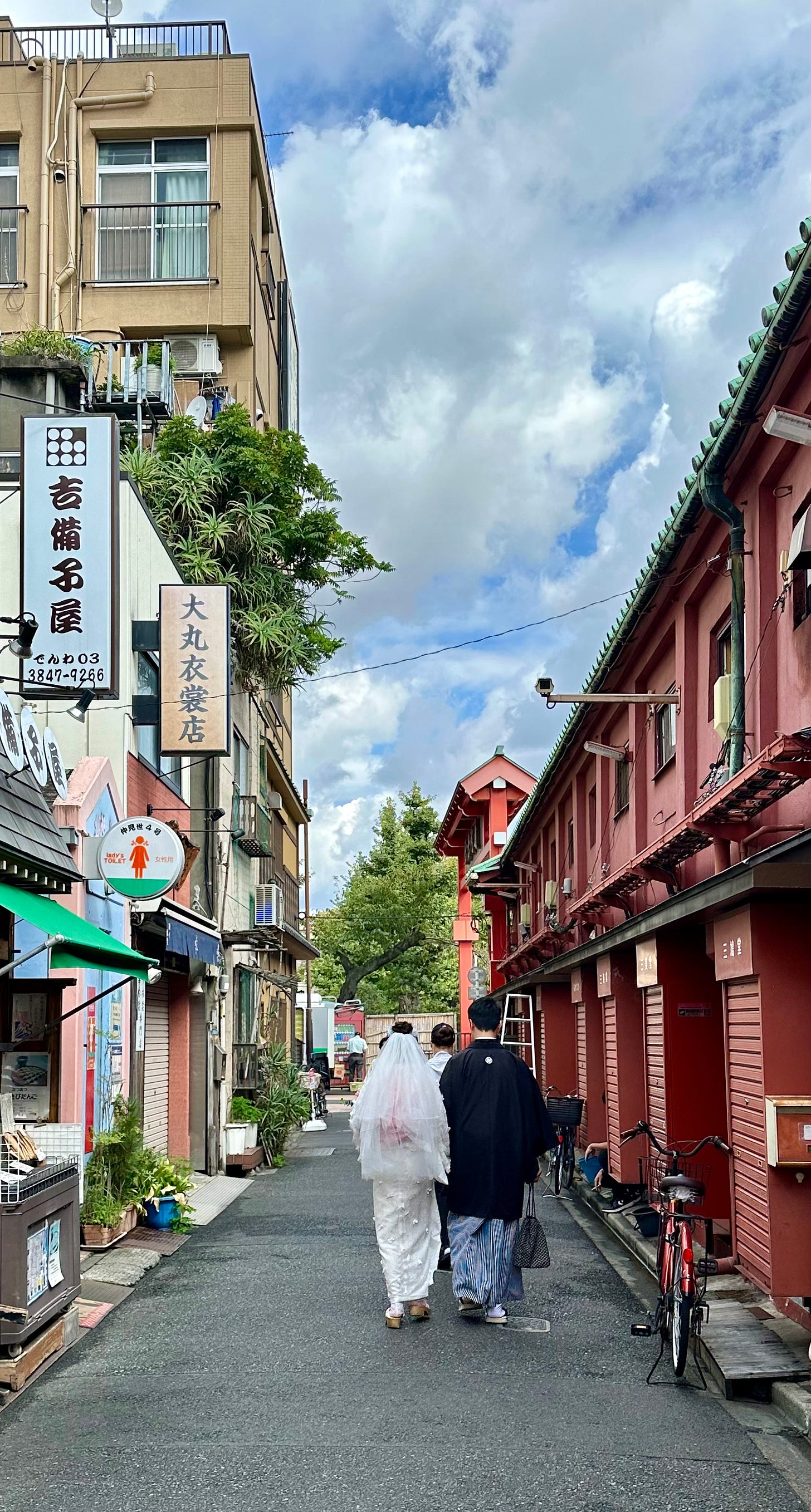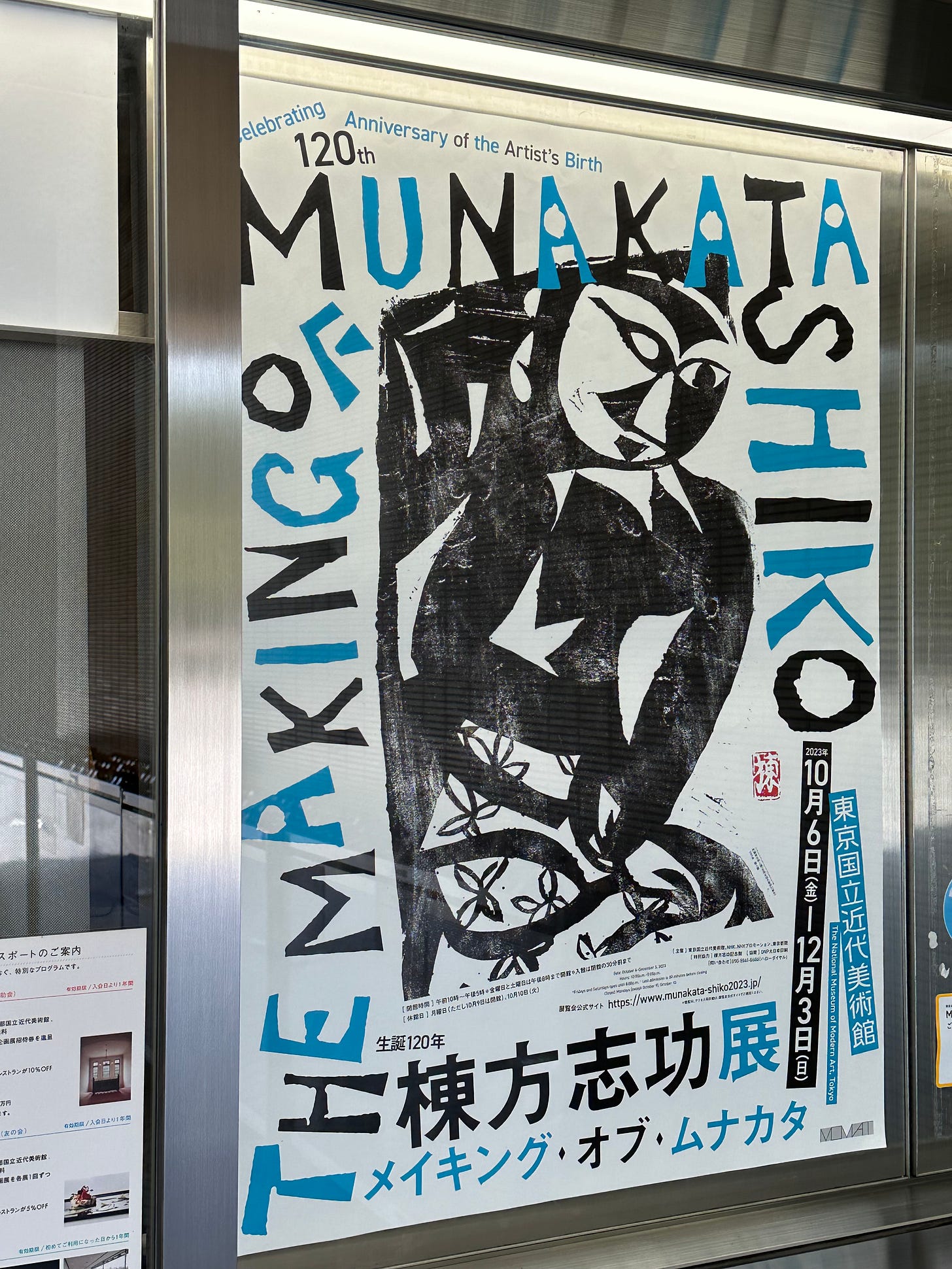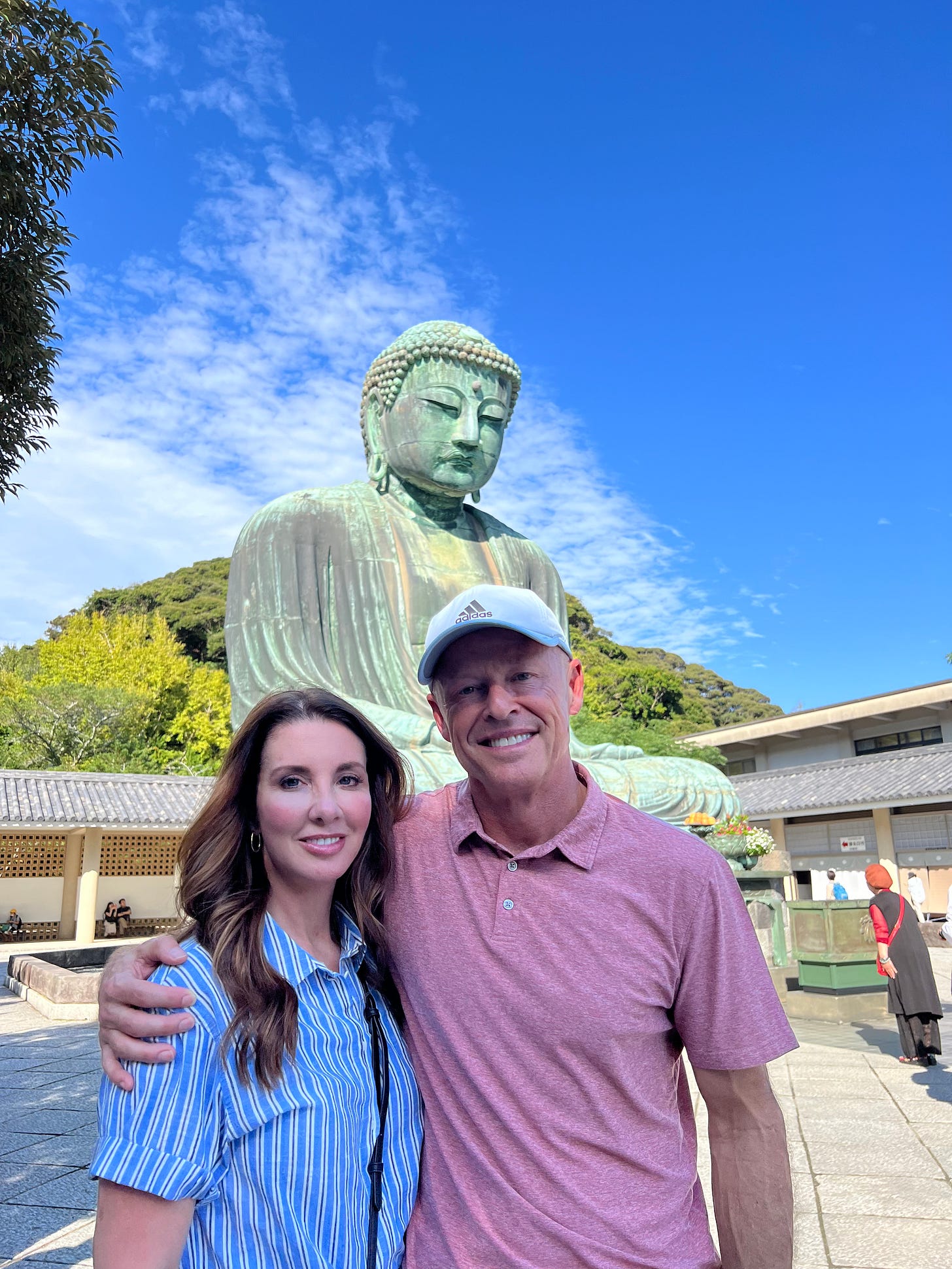How not to be lost in translation
Tips, travel insights, and itineraries from my two week trip to Japan
One of my most coveted travel destinations has always been Japan. Over the past four years, I had to cancel two separate trips to the country — one in 2019 because it coincided with a book tour and one in 2021 due to COVID restrictions. Each trip was timed to catch Japan’s amazing seasonal displays of spring cherry blossoms or brilliant fall foliage; and both times we cancelled, we were truly bummed to have to unravel our plans.
After COVID restrictions were lifted, we began planning yet another trip to Japan for this year. Because my husband’s work schedule only allowed us to travel in late September, we knew the only seasonal display we’d experience would be heat and humidity. I hadn’t dreamed of visiting Japan when it was nearly 100 degrees and intermittently rainy, but our recent two week trip to Tokyo, Kyoto and Hakone was amazing.
I’ve been asked to recap highlights, recommendations and destinations, so here they are in case you’re planning your own trip (or if you just want to live vicariously through me).
Some general recommendations:
Bring non-wifi related materials for the long flight: We thought it was a fluke that we didn’t have wifi on the 11 hour daytime Nippon Air flight from San Francisco to Japan, but after speaking to other travelers, we found out this is pretty typical. We also didn’t have wifi on the way home. So make sure you’ve downloaded your Netflix shows and loaded up your Kindle, because you likely won’t be scrolling through Instagram.
Take the bullet train: You can get almost anywhere and in just a few hours. The bullet train is cheap (less than a plane ticket), convenient (no security because no guns), easy for English speakers to navigate, and clean (plus free wifi). We took the bullet train from Tokyo to Kyoto to Hakone, but there are nine shinkansen lines in Japan and together they cover the islands of Hokkaido, Honshu and Kyushu. That means you can travel north from Tokyo all the way up to Hakodate on Hokkaido, or west past Osaka and Hiroshima to Kagoshima.
Ask locals where and what to eat: I’ve been told I eat like a toddler — heavy on the meat and sugar, light on the veggies and fruits (I’m embarrassed by this and even tried hypnosis to fix it, but to no avail). But I was able to find plenty of great food to eat in Japan (and some foods I was just proud I tried, like eel, beef tongue and sea urchin). Bottom line: Japanese chefs know what they’re doing; the nation’s restaurants have the second most Michelin stars of any country (414), just behind France (625). Because my palate is somewhat limited, I stuck mostly to tempura, ramen and the amazing wagyu beef the nation is famous for. We also had Italian (miss), Indian (pretty good) and Chinese food (amazing).
Go to neighborhoods where the Japanese live: Yes, see all of the touristy places, but also don’t forget to swing through neighborhoods that allow you an authentic Japanese experience:
Kuramae, which has been dubbed “Tokyo’s Brooklyn,” Kuramae is just a two minute train ride from Sensoji or a stroll alongside the Sumida river and is a much quieter neighborhood compared to the bustling streets of Asakusa.
Daikanyama, another district known for its chill, laid-back atmosphere. It’s one of great locations to escape the crowded streets of Shibuya. In between the stations is the Former Asakusa Residence, a well preserved house and traditional garden built in the Taisho era in 1919, an “undiscovered” attraction.
Jiyugaoka is a fashionable neighborhood situated on the southern border of Tokyo. It’s also a popular shopping district among locals and ranked as one of the most desirable places to live, making it an alternative to Shibuya for shopping.
Kiyosumi-shirakawa is known for its coffee culture and its many specialty coffee shops, including the “Allpress Espresso Tokyo” and “Switch Coffee Tokyo”. The district also boasts a vibrant creative scene with art galleries, museums, and expansive green parks.
When in Rome: First of all, the Japanese are not fucking around when it comes to rules, especially punctuality. If your plane or train is scheduled to leave at 4 pm, you can be sure it is, in fact, leaving at 4 pm — with or without you. In fact, Japanese officials have apologized publicly for egregious offenses like a bullet train leaving seconds early or arriving seconds late. This is not the Acela, people! Also, if you jay walk (as Americans are wont to do), you will be on the receiving end of many horrified and angry glares. When it comes to tipping, we were told “it is not expected, but it is appreciated.” So we went ahead and tipped all of our guides and drivers. Also, don’t share food with others using chopsticks, only tie your kimono right side over left, and feel free to slurp your soup. As an aside, I didn’t see any Japanese women wearing leggings, shorts, flip flops or revealing clothing of any kind (I did, however, wear shorts and flip flops).
Hotels vs Ryokans: There are more than 80,000 accommodation in Japan. The breakdown is about 10,000 hotels and less than 50,000 ryokans. Ryokans are basically Japanese inns where you sleep on futons versus a hotel where you sleep on a bed in Western-style room. At most ryokans, you have to take off your shoes at the entrance and change into slippers and robes (which you wear everywhere on-site). Instead of having restaurants, ryokans typically provide Japanese-style meals in guests’ rooms. And many ryokans have spring water both inside (we had a tub on our deck in Hakone) and outside (in communal baths). I was perfectly comfortable sleeping on my ryokan futon and really loved having a hot bath on our deck. I did not, however, love how tiny everything was - I felt like Godzilla, and I’m only 5’4.
You don’t have to climb Mt Fuji: Before my trip to Japan, I’d always dreamed of climbing Mt Fuji (I’m big on hiking and even climbed Mt Kilimanjaro). However, our guide in Japan (who had climbed Mt Fuji over 100 times with tourists) told us there’s a wise saying: “A wise man climbs Mt Fuji once, only a fool climbs it twice.” Apparently it’s crowded and the trails are often gridlocked; sharp, jagged, pointy volcanic rock makes the trip difficult; and the mountain sleeping huts are not conducive to actually sleeping. So certainly be sure to see Mt Fuji, but don’t feel pressured to summit it.
Specific itinerary suggestions:
Tokyo:
Must see art exhibit now through December 2023: “The Making of Munakata Shiko: Celebrating the 120th Anniversary of the Artist’s Birth”
Check out the Tsukiji Outer Market
Shop in Ginza
See the Imperial Palace
Sign up for a sake tasting
Eat lunch at the Tokyo Sky Tree restaurant for the best city view
Go shopping in Yanesen
Take a walking tour of Asakusa and tour the Sensoji Temple
Take a guided tour of the Koishikawa Korakuen Garden
Eat dinner at Sense
Kyoto:
Walk through the Geisha district
Go sightseeing and check out Tofukuji Temple, Sanjusangendo Temple and Tenryuji Temple
Try cloth dying in Roketsu
Eat lunch at Eitaro Ramen (best ramen I’ve ever had — try the citrus broth)
Eat dinner at Mikaku (best beef I’ve ever had) or The Sodoh
Visit Arashiyama for a day trip and take a rickshaw ride through the bamboo forest or a river boat ride
Hakone:
Visit the open-air sculpture park
Try woodworking at the Moto Hakone
Walk through Onishi Park
Cruise across Lake Ashi
Eat matcha ice cream
Walk the cedar-lined Tokkaido Trail
Hike the Owakudani hot springs and ride the cable car
Eat dinner at Daichi
Take a day trip to Kamakura (aka, Japan’s California) where you can visit the Great Buddha











On my bucket list for sure.
What a wonderful trip! I lived in Japan for 8 years. You covered a lot of the country in two weeks! I have to say, I did climb Mt.Fuji and it’s one of my favorite memories. My friends and I did it at night to see the sunrise in the morning from the summit. As special as it was, I would not make that climb again. It is a very difficult hike over loose, lava rock with several hairpin turns.